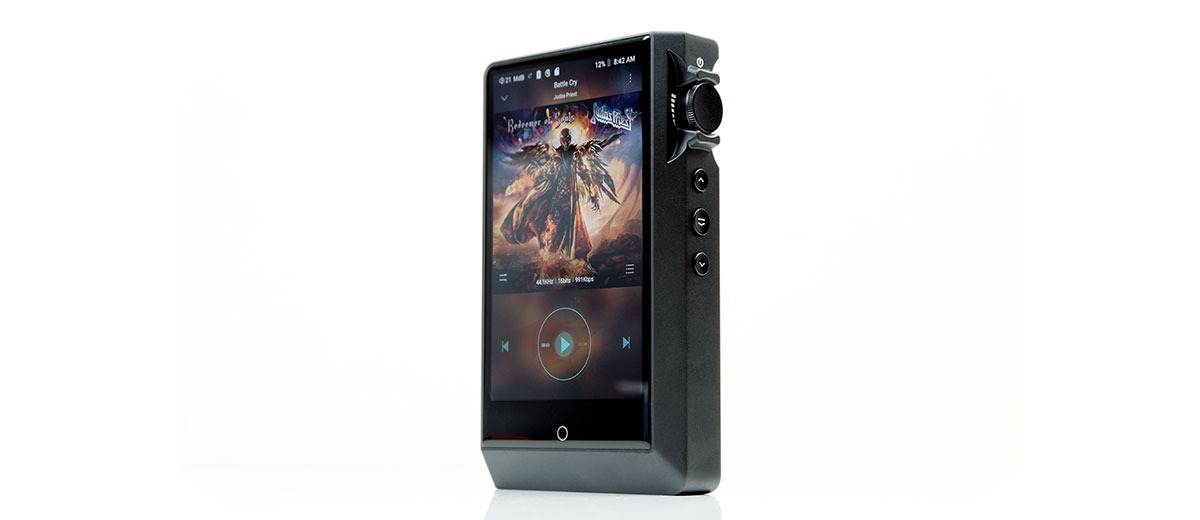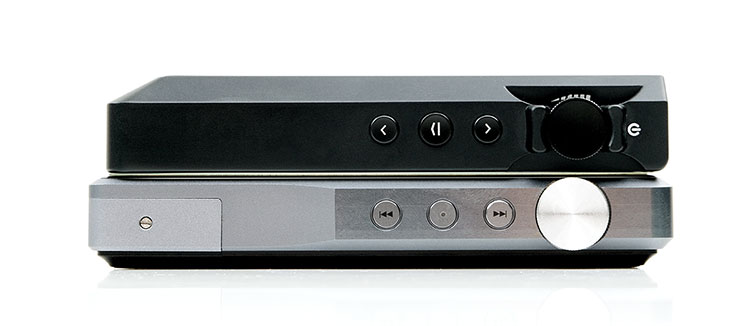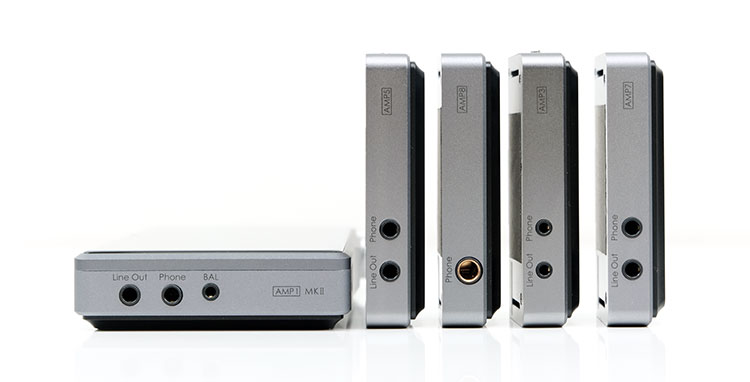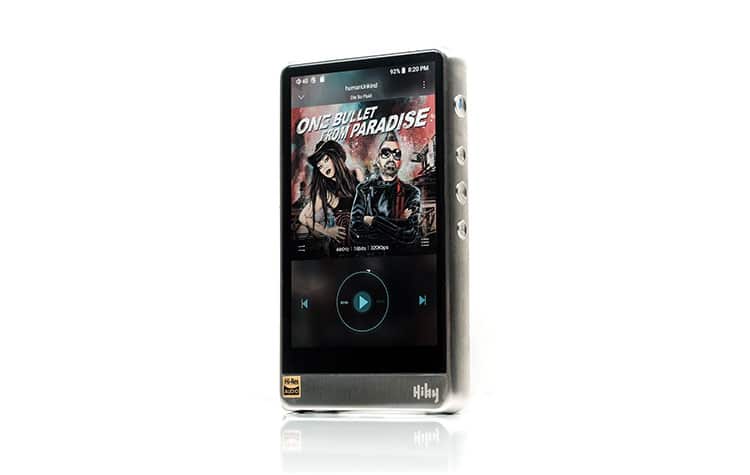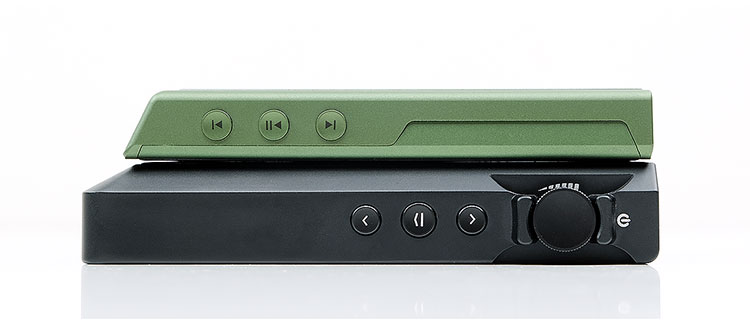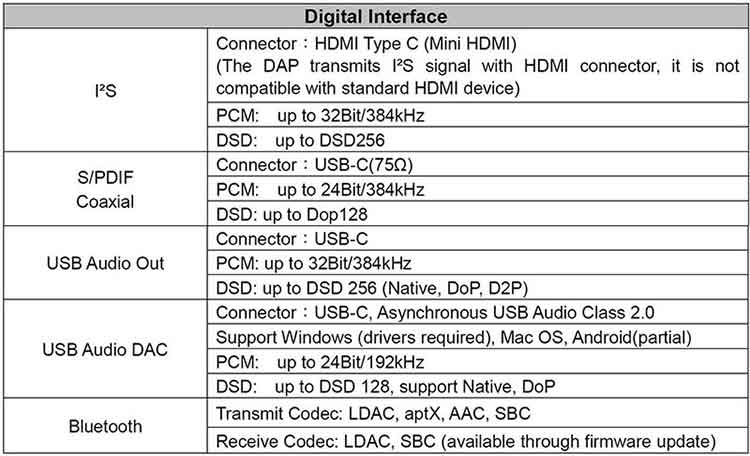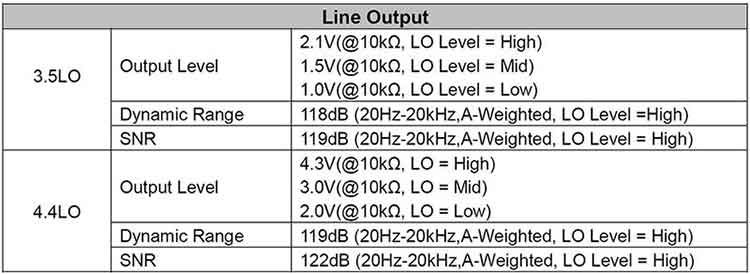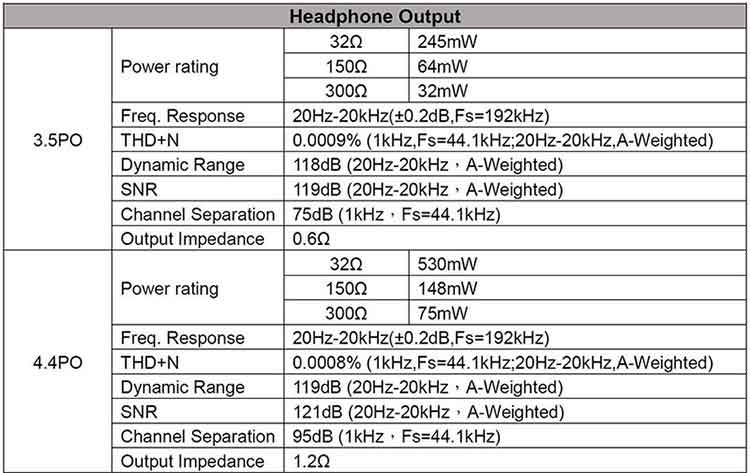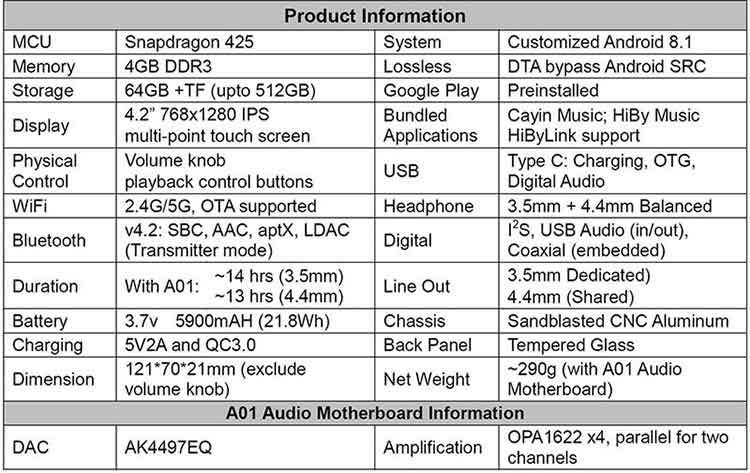Select Comparisons
All comparisons were tested with the same DUNU Noble cable and a mix of Campfire Audio Solaris, Andromeda, 64 Audio tia Trio, and the Noble Audio Khan.
iBasso DX220
$899
Technical
This is the strongest direct competitor to the N6ii but thankfully a very different experience in terms of sound and to a certain extent user interface. Let’s start with the commonalities. Both use Android Oreo, both have WiFi and BT and are open platforms for apps expandability as well as up to LDAC 990kbps for BT codec quality.
Both DAPs also have USB-DAC, SPDIF, 3.5mm lineout capability and operate DTA for bit-perfect output. The two DAPs also have a single microSD card slot with 64GB onboard memory and OTG capabilities.
My one salient point on the UI is that the 4GB DX220 is not as fast as the 4GB N6ii. The CPU of the DX220 clock-rate capped at a lower speed than the N6ii to keep battery life closer to 8 hours. The N6ii has a faster CPU setting and longer battery life than the DX220. No Google Play Store on the DX220 either is a hindrance so I find the N6ii snappy UI and app experience much more satisfying and complete.
Eco-System
Inside there is a tremendous difference despite both using a swappable module system. The DX220 has a fixed DAP implementation with a swappable amp card system. The amp card system has been in place since the DX200 and has been growing to quite an impressive 9-10 cards now with the AMP9 NuTube being the latest.
The N6ii swappable motherboards go even further with the ability to change the amp and DAC at the same time. Having said that the N6ii has only one motherboard the stock A01 so it is a work in progress and not as developed as the iBasso amp cards.
DAC
The fixed DAC inside the DX220 is a good one with a dual Sabre ES9028PRO implementation compared to the N6ii’s single AKM Ak4497EQ build. The decoding of the DX220 does go up to DSD512 compared to DSD256 of the N6ii but bear in mind commercially it is unlikely you will ever need DSD512 solution.
Both are bit-perfect but the DX220 is setup to natively unfold and render MQA in X4 mode. The N6ii does not natively decode but will handle playback from TIDAL Masters up to 24BIT/88.2k.
More importantly is the 5 Femtosecond League Oscillators, 2 of which are Accusilicon Ultra Low Phase Noise Femtosecond Oscillators inside the DX220. This is almost a desktop DAC solution. The N6ii uses only 3 active oscillators making the DX220 just a little more capable as a USB-DAC.
Amp
The stock amp of the DX220 is the new AMP1 MK11 with an output rating of around 1.2W per channel under a 32Ω load for balanced and 320mW per channel for the equivalent 32Ω unbalanced. It is a little more powerful than the N6ii A01 motherboard which tops out at 530mW balanced into the same load.
The difficulty in this comparison though is that this is iBasso’s 10th amp card and Cayin’s first motherboard. It is quite possible subsequent motherboards will be more powerful, possibly quieter, etc. It is a tough one to predict in the long run.
Signal to noise ratio on the AMP1 MK II is higher at 125dB and 123dB balanced and unbalanced compared to the A01’s 121dB and 119dB. THD+N is also a bit lower at 0.0002% (32Ω load) balanced and 0.00035% (32Ω load) unbalanced compared to the A01’s 0.0009% and 0.0008% for unbalanced and balanced.
Noise
Both have 3 stage gain features offering excellent low noise floors for sensitive monitors. The AMP1 MK11 just edges it slightly for me for a black background with the likes of the Solaris which is my most sensitive monitor but the gap is almost unnoticeable except for super quiet chamber classical sequences.
Tuning
Unless you have the full range of amp cards at your disposal, the stock DX220 with AMP MKII is markedly different sounding from the N6ii with A01. There is a very clear choice here in terms of sound quality so personal preference combined with power and noise floor sensitivity will be the key factors in the decision making here.
The N6ii delivers a warmer denser sound with more low-end to mids focus compared to the stock DX220 more linear and neutral performance.
The DX220 excels at instrumental separation with excellent control throughout including a very holographic soundstage and enhanced treble extension and focus. It does not deliver this at a cost of sounding analytical either. It impressively refined with slight wetness to its attack and little in the way of grain.
N6ii Focus
The N6ii switches focus to the low-to-mids with a little perceptible bump in the upper mids compared to the DX220. It does not have the same treble forwardness with just a hint of attenuation that takes a little odd-harmonic overtone out of the timbre and injects instead a bit more body and warmth.
You will hear that more in the N6ii lower-mids instrumental notes with a thicker smoother timbre and just a shade stronger bass fundamental. You can also hear that in percussion timbre with the N6ii delivering a very natural tone but longer decay compared to the DX220’s drier and slightly lighter percussion response.
The N6ii also sounds a bit closer, not quite as expansive or offering quite the same perceptible headroom as the DX220 AMP1 MKII but it can also sound more powerful and deeper than the DX220’s more neutral tuning.
Overall, I would gravitate to the N6ii for classic and modern rock and where I need a stronger voice and solid PRaT. The DX220 AMP1 MKII is more reference and excels more with expansive recordings that require a bit more treble presence.
HiBy R6 Pro
$799
Technical
Gosh, almost the spiritual cousin of the N6ii with both using a Snapdragon 425, both using DTA, BT4.2, WiFi, and HiBy Music installed out of the box with HiBy Link capability. Physically they also share the same LCD screen and 2.5D glass finish and use Android Oreo with Google Play Store installed. No surprise then considering that HiBy is one of Cayin’s strategic partners.
The additional 4Gb RAM of the N6ii is a small advantage over the R6 Pro’s 3GB though you might be hard-pressed to push the N6ii to the limit to test that advantage out in daily use. Our AnTuTu performance benchmarking pretty much had them at the same level.
DAC & Amp
Internally, these 2 DAPs are radically different from the R6 Pro using a dual ES9028Q2M DAC chipset compared to the N6ii’s single AK4497 interchangeable A01 motherboard design. Decoding on both is the same at up to DSD256 and PCM 32BIT/384kHz.
The R6 PRO amp stage is not swappable. However, it does offer more grunt than the A01 motherboard at a max 750mW balanced 4.4mm compared to the N6ii’s 520mW with a similar balanced 32Ω load. The grunt comes at a cost though as it does have a much higher noise floor than the N6ii. Noise is more of a factor with sensitive IEMs than on the N6ii.
Tuning
These are very close in general tuning but going back and forth I think it comes down more to the opposing amp stage capability combined with the specific tweaking HiBy have done with the high-frequency capability of the R6 Pro.
First, this is not a typical Sabre tuning. The R6 Pro is thicker, meatier with a more natural tone than the original R6. The presentation is planted, almost as planted as the N6ii save for one key ingredient that I think the amp stage of the N6ii is better at and that its dynamic range.
Now some of that perceived dynamic range advantage of the N6ii might be due to the perception of a more neutral upper mids and softer treble delivery. I know HiBy tuned the R6 Pro with a little fade to give it a more natural sound. Whilst the N6ii does not have a tremendously forward treble either, its upper mids and lower treble do seem a little feistier. There is a smidgen more odd-harmonic overtone in instrumental and vocal timbre that gives the N6ii a slightly more exciting level of bass/treble contrast.
Combine that with what I believe to be just a touch more dynamic range in the A01 amp stage and suddenly you start to hear a more open or complex sound signature than the R6 Pro. It is not a huge gap but it is noticeable on the likes of the Solaris and tia Trio where treble presence is more perceptible.
Colorfly U8
$1199
Technical
Mike did the review on this one but then sent it over to me so I can continue to reference it in some of my own reviews. The U8 price point is just $100 lower than the N6ii and more or less in the same class though it is Colorfly’s flagship DAP.
The U8 packs in a dual Colorfly α (alpha) DAC chipset to give it an official name. I can’t confirm but when I spoke to Colorfly last year they did say it was a heavily customized in cooperation with Sabre and based on the ES9038Q2M which is on par with the N6ii’s AK4497EQ in terms of performance but offering a very different timbre.
DAC
The interesting aspect about the U8’s DAC is the supposed ability to decode up to DSD512 as well as PCM 32BIT/384kHz which puts it on par with the DX220/200 and slightly ahead of the N6ii. However, DSD512 is just not a commercial reality so this advantage is akin to photography pixel peeping.
Amp
The amp stage is not modular unlike the N6ii and does not have the latest 4.4mm output connection. Both have 3.5mm TRS and LO outputs and the U8 has a 2.5mm TRRS instead of 4.4mm with no balanced LO. Both have SPDIF though the U8 is optical and the N6ii is coaxial.
The unbalanced output power of the U8 is significantly weaker than the N6ii with a max of 137mW or 2.1Vrms unbalanced. However, balanced at 4.2Vrms or 550mW is impressively on par with the N6ii’s 4.4mm balanced PO capability. You will find the U8 impressive quiet with just about any monitor and certainly a little ahead of the N6ii in balanced or unbalanced for low noise floors.
Design
Ultimately the U8 is a gorgeous design on a visual level. It is much smaller, sleeker and lighter than the N6ii. I cannot fault its pocketability and the really handy little top LCD screen for quick-fire info on battery status and volume.
The 3.97 WVGA 800x 480 may lack the ‘pop’ of the larger 2.5D glass protected 780P IPS screen of the N6 but I find its smaller bezel dimensions a little more attractive. Both have great viewing angles and honestly the tone and saturation on the U8 screen are excellent.
Functionality
Beyond that, the U8 is a bit of a mess. The touch volume slider is clunky and time-consuming compared to the simpler N6ii digital rotary dial and touchscreen combo. The OS is Android but heavily skinned and I am not honestly sure which version but it has no app capability so no expandability despite having WiFi. The N6ii is far more open and scalable for modern audiophile demands.
From what I can see, WiFi is purely for OTA updates and nothing else. BT v4.0 on the U8 is not set up for bi-directional like the N6ii’s BT4.2 implementation. Smartphone connecting, (after pairing), failed on my P20 but BT dongles pose no issue so you can send a BT signal no problem.
Tuning
To some extent, the U8 is closer to the DX220 AMP1 MKII tuning when compared to the N6ii. However, it has some of its own unique quirks that give it a different tuning to the N6ii also. Overall, the U8 is cleaner sounding with elevated treble overtones, a punchier mid-bass but with less body and sub-bass presence.
Certainly, the U8 instrumental timbre is more neutral than the N6ii but unlike the DX220 it doesn’t have that slight mid-bass to lower mid-bass bloom to wet the attack. Instead, the U8 delivers a little more treble in its harmonic balance than the N6ii. Percussion is brighter sounding on the U8 as a result, leading notes have a little harder edge to them, and sibilance, though not omnipresent, will be more noticeable.
The N6ii fuller, warmer timbre is wetter, smoother, and more natural to my ear. Percussion timbre has more body, less splashy and you will hear less sibilance by comparison. The sub-bass presence and power are more substantial on the N6ii but perhaps not quite as mid-bass punchy as the tighter or more neutral U8.
In terms of staging, the N6ii projects a deeper soundstage compared to the U8. However, the U8 has a bit more treble extension and presence. It is perceptibly the taller of the two but neither are quite as expansive as the DX220/AMP 1 MK11 combo.
Our Verdict
The N6ii is very much a long-game digital media player. As of right now, the A01 motherboard taps into Cayin’s house sound or preference for something slightly richer, sweeter, and an all-round performance that will appeal to a very wide audience indeed.
But who knows where things will go in the future. With the launch of a completely interchangeable sound section (DAC & Amp), Cayin can go in any direction with the performance of the N6ii outside of purely physical and electrical limitations. Certainly, the main player’s excellent CPU, RAM, and battery performance give it a strong element of futureproofing to go along with it.
That’s the risk and possibly the ultimate pay-off that can make it one heck of a unique digital media player with a stellar eco-system of motherboards or a possible dead-end from unknown factors or technological changes.
The audiophile is a fickle market but the ability to potentially factor in new DAC developments, or go 180 in terms of amplification tonality without having to launch a new player to go with it is, at the very least, an attractive and intriguing concept. One that could garner quite a few new fans in the long run.




